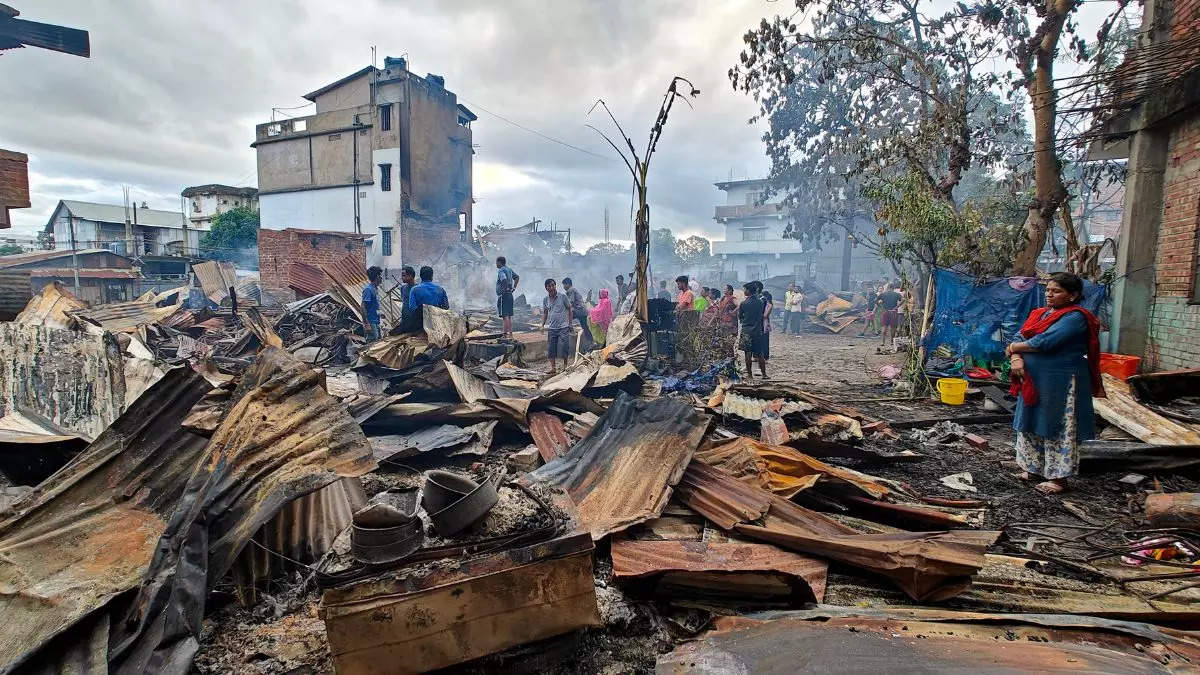NEW DELHI: In a significant development, the Manipur high court has modified an order and deleted its direction to the state government to consider including the Meitei community in the list of the Scheduled Tribes (STs), months after the verdict sparked violence in the state.
Justice Golmei Gaiphulshillu said the direction in question was contrary to the Supreme Court’s decision in State of Maharashtra v.Milind & Ors, in which the top court had observed that courts cannot modify, amend or alter the ST list.
The earlier direction was part of a judgment passed on March 27, 2023, by former acting chief justice MV Muralidaran, in which the high court had asked the state to consider the inclusion of Meitei community in the list of Scheduled Tribes in Manipur.Notably, the impugned direction was to the effect that the state shall “consider the case of the petitioners for inclusion of the Meetei/Meitei community in the Scheduled Tribe list” on an expeditious basis.
The ethnic conflict between the Meiteis and the tribal Kuki-Zo communities in the state erupted following this order.
The months-long violence claimed hundreds of lives.
In October last year, a division bench of the Manipur high court had agreed to hear an appeal filed against the controversial order.
The appeal was moved by the All Manipur Tribal Union and various groups who argued that groups associated with the rights of the tribal community were not a party to the writ petition in which the 2023 direction was passed.
It was further contended that the 2023 judgment has adversely affected the fundamental and constitutional rights of 34 recognized tribes in Manipur.
Justice Golmei Gaiphulshillu said the direction in question was contrary to the Supreme Court’s decision in State of Maharashtra v.Milind & Ors, in which the top court had observed that courts cannot modify, amend or alter the ST list.
The earlier direction was part of a judgment passed on March 27, 2023, by former acting chief justice MV Muralidaran, in which the high court had asked the state to consider the inclusion of Meitei community in the list of Scheduled Tribes in Manipur.Notably, the impugned direction was to the effect that the state shall “consider the case of the petitioners for inclusion of the Meetei/Meitei community in the Scheduled Tribe list” on an expeditious basis.
The ethnic conflict between the Meiteis and the tribal Kuki-Zo communities in the state erupted following this order.
The months-long violence claimed hundreds of lives.
In October last year, a division bench of the Manipur high court had agreed to hear an appeal filed against the controversial order.
The appeal was moved by the All Manipur Tribal Union and various groups who argued that groups associated with the rights of the tribal community were not a party to the writ petition in which the 2023 direction was passed.
It was further contended that the 2023 judgment has adversely affected the fundamental and constitutional rights of 34 recognized tribes in Manipur.
Moreover, it was argued that the Meitei community, being dominant and economically, politically and educationally advanced, would grab a majority of the ST-reserved seats including in the legislative assembly as a result of the high court’s direction.
Meiteis account for about 53% of Manipur’s population and live mostly in the Imphal Valley, while tribals, which include Nagas and Kukis, constitute 40% and reside mainly in the hill districts.
(With inputs from agencies)

